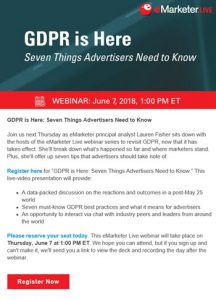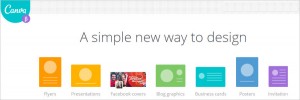Your marketing automations must build in exclusions for people who don’t receive a follow-up message.
Back in February, I used a vacation-rental site to book a beautiful house on the water for my wife and me and a group of friends. We read the reviews, scrutinized listings and picked the winner.
The booking process went well, but if you have ever booked a site without seeing it in person, you might feel a little anxious after clicking “Book now.”
Will this place that just ate a big chunk of my credit limit turn out as advertised? Will it live up to the photos in the listing, or is it really a shack on a main road with some stranger’s shoes on the deck?
One day after I booked, I got an email. “We saved your search so you don’t miss out on your dream vacation,” it said.
Yes, folks, I freaked out.
Attack of the browse-abandon emails
I booked the place, so why was I getting this browse-abandon email? My card didn’t go through? The owner refused my booking? My reservation got lost? Somebody else booked it a second before I did?
Over the next four months, I looked at the property 22 times, and I received 22 follow-up emails. I know exactly how many because I saved them all.
I won’t mention the site because we all have things in our email programs that we know we need to fix. But there’s an opportunity to learn from it and make sure we’re not making the same mistake.
If you follow me on MarTech, you know how much I love browse-abandon emails (not). But this gave me a whole bunch of teachable moments, which I have narrowed down to three because I just returned from that beautiful house and am in post-vacation-chill mode:
1. Set up or adjust your exclusions
Browse-abandon emails make sense in travel and hospitality, because repeatedly viewing locations, hotels and attractions can be strong intent signals. The dollar value is higher, and the travel shopper’s mindset is more considered.
But…
Your marketing automations must build in exclusions for people who don’t need to receive a follow-up message, even if they meet some of the triggering criteria, like a site visit. Yes, they are still showing intent, but has that intent grown or has it waned? Do you need to change the message?
You don’t have to include everyone who meets your criteria in your browse-abandon sequence. Think deeper. When should you not send a standard browse-abandon email to someone who visited a site but left without clicking the “Book now” button? When should you change the message? (See the next item.)
Exclusions are just as important as inclusions in marketing automation. If you have no exclusions, you’re doing it wrong. In fact, I can’t think of a single automation that wouldn’t have at least one exclusion.
2. Vary the messages
Remember those 22 browse-abandon emails? They were all pretty much the same. Same headline, same copy, even the same recommended properties. It reflects badly on the brand.
If you have an automation that executes every time an event happens, you can’t send the same message every time. Set limits. How many emails with the same message is too many?
You need a good reason to operate an open-ended automation. This particular automation did not have a “converted” exclusion. You also should set a limit – say 10 follow-up emails, and that might even be too much. If I view a property 10 times but your data shows I still haven’t booked, it’s time to change the message.
Escalate me to customer service. Ask if I need help. Give me a number to call. Give me a chance to say I’m not interested any longer or I booked the property.
It’s all about meeting your customers where they are, based on intent and what you know about them.
3. Resolve your data disconnects
You’re probably thinking, “Ryan, their order system isn’t connected to their email marketing system.” I understand that disconnect in data. But when your program is so disconnected that it’s not effective, you should limit the impact.
If your browse-abandon email isn’t hooked up to your order history, then you should limit your email series to three or four and test to find out at what point extra emails become annoying.
This limits the damage to your brand experience and forces you to solve the problem.
Even a manual intervention could have helped. You can implement a range of temporary fixes while you formally integrate the data.
We don’t always have all the data we need to be successful. But you have three choices here:
- Create a good enough automation even though you lack data.
- Wait until you have all the data you need so you can perfect the automation.
- Launch an email that doesn’t hurt the brand experience but still helps you accomplish a goal (the agile solution).
We all have data problems. But our job is to make do with what we have and not tick off people who just spent a gobsmack of money on our products or services.
Wrapping up
Marketing automation is incredibly powerful. I know companies that make 50% of their email revenue on automated and transactional emails on 4% to 5% of their overall volume.
But with that power comes the responsibility to build programs that enhance customer intent, grow that intent and convert that intent — and, when the customer converts, to recognize that conversion.
This intent gap signals us to review our marketing automations and find out what’s in the data, what’s missing, what’s excluded and what’s included. If your marketing automation just sends an email every time an event happens, that’s not automation, that’s just repetition.
The smart play is to make sure your automations have the right data, you have considered your inclusions and exclusions, varied your messages and limited the impact.
Sometimes you can send too many emails. Just because you have an event on your website, that doesn’t mean you have to send the email associated with it.
Or, as my friend David Baker says, sometimes email doesn’t work. In my situation, the email the company sent me — and sent me, and sent me — didn’t work. But it serves one useful purpose.
It gave me the opportunity to see where we need to improve our programs and look critically at how we execute marketing automations.
(Drop microphone, walk off stage. Walk back on, pick up mic.)
If you think I’m writing about your company, print out my column, send it to your team and say, “Ryan just wrote about us! Here’s why we need to fix our automations.” Not that I’m so important, but seeing your problem described publicly on MarTech.org might motivate your team to act. Then write to me and let me know how it went.
The post 3 ways to avoid email automation breakdowns appeared first on MarTech.
MarTech(29)
Report Post





